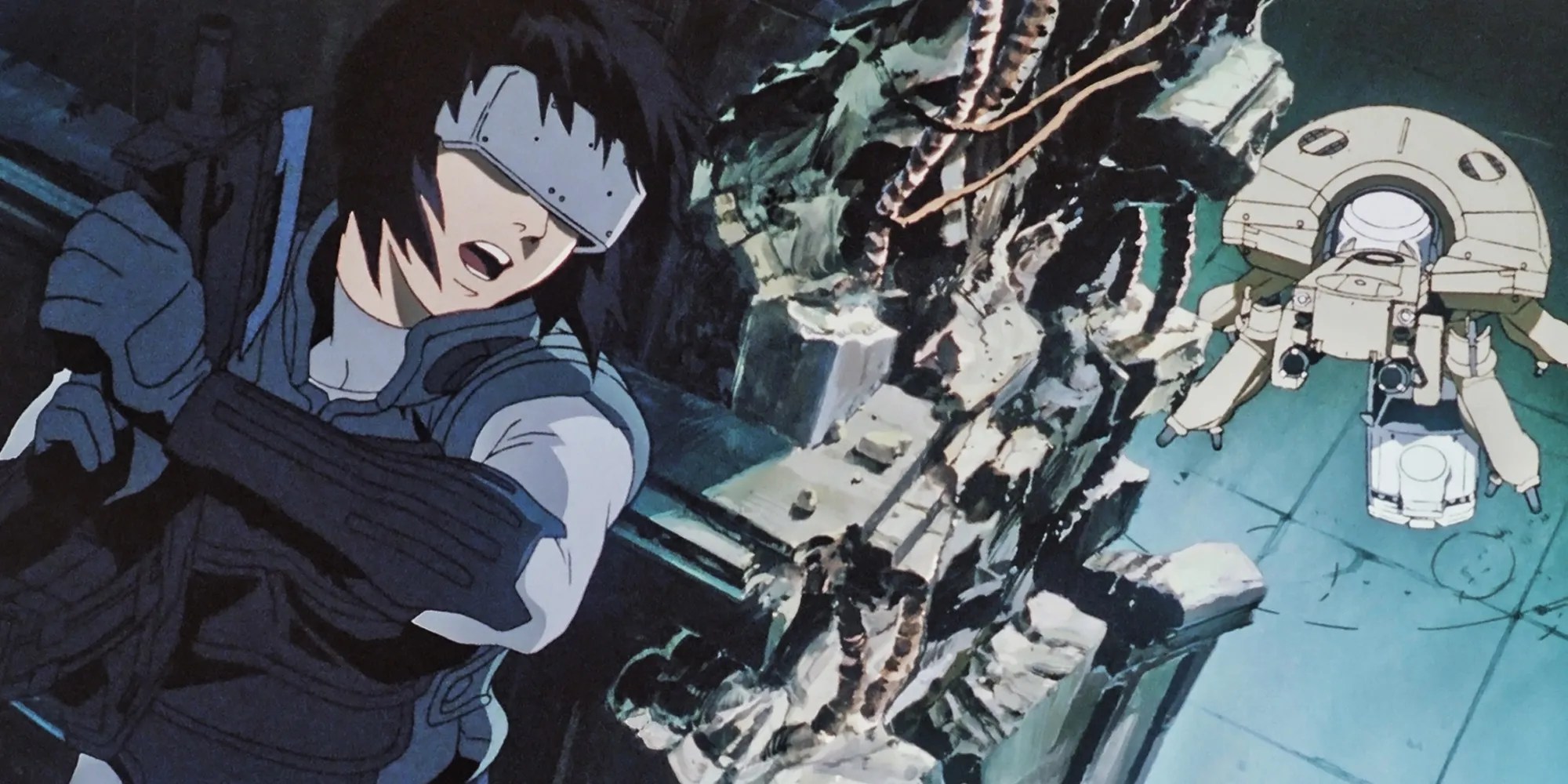Minor spoilers for Ghost in the Shell (1995) ahead!
At first glance,Sword Art OnlineandGhost in the Shellhave very little in common, either in terms of narrative focus, genre trappings, or even the target demographic, but they aren’t entirely dissimilar. The greatest thread tying the two together is the enthusiasm with which they look at the possibilities of the internet, and more specifically, how life on the net and in the real world can be intertwined.
SAO’s first season aired in 2012 and was sold on its simple but enticing premise: thousands of players have been trapped inside the titular VR MMORPG Sword Art Online, and if they die in the game, they die in real life. For the first 14 episodes, this was all the show was, but once everyone escaped and the story continued,a sizable contingent of viewers wondered “Why?”

RELATED:The Most “Accurate” Ghost in the Shell Anime
Must The Show Go On?
The Fairy Dance Arc is where many viewers jumped ship and for those who stuck with it, the show bearing the name “Sword Art Online” seemed pretty content to leave that game in the dust. There was no longer a death game, but instead, new VR MMOs to explore and new sources of tension to concoct, leading to perhaps the biggest story since Aincrad, the Alicization Arc.
To those who have long written off the series, its continued existence might reek of capitalizing on nostalgia and the audience’s love for these characters. While that most certainly is not an unthinkable possibility, you don’t have to look very deep within to find the biggest thematic reason as to why the franchise continued.

Looking at the series as a whole, the gameSword Art Onlinewas never the real point, even if it’s the most beloved among scorned fans. It was simply the origin of something much bigger that comes to be the centerpiece of the franchise; a plot device that has roots in every new season and film set after Season 1.
The World Seed
At the end of the Fairy Dance Arc, when Kirito was confronting Sugou Nobuyuki to save Asuna, he is visited by a simulated memory of Kayaba Akihiko, the creator of Sword Art Online. Kayaba gives Kirito the World Seed, which is effectively the tools necessary to create a game just like SAO, but without the death game aspect.
So Kirito releases thetechnology on the net as open-source software, allowing programmers from around the world to create virtual worlds. Practically every VR MMO after season one is a game that was created as a direct result of the Seed and even allows people to carry over their data between worlds seamlessly.

At some point, while watchingSword Art Online: Ordinal Scalein theaters in 2017, it dawned upon me that the way characters talk about VR technology is very similar to howGhost in the Shelltalks about the internet. Both shows discuss - albeit to greatly different degrees - how advances in technology - though often scary - can yield great opportunities to change lives for the better.
“The Net Is Vast And Infinite”
1995’sGhost in the Shell, directed by Mamoru Oshii, is all about questioning the nature of the soul in a future in which humans have merged with machines. It is a post-singularity world, though one in which the bulk of humanity still clings to arbitrary distinctions about what makes someone human or not. This goalpost which progressively becomes more arbitrary as time goes on is challenged by the existence of the film’s antagonist, The Puppet Master.
The Puppet Master is supposedly a super wizard class hacker like the cyborg protagonist, Major Motoko Kusanagi. However, as the film goes on to reveal, the Puppet Master is actually an AI, designated Project 2501. At the film’s climax, the Major dives into the Puppet Master’s cyber brain, when suddenly they offer her an opportunity to become more than human.

We won’t spoil the ending, but in the final moments of the film, the Major looks out upon the city and proclaims"The net is vast and infinite,“which becomes something of a mantra for the series going forward. In this franchise about detectives, cyber-terrorism, politics, and war, there is a strong philosophical core concerned with how humanity might evolve, and how the internet will play a role in that evolution.
The Virtual Future
Ghost in the Shellsupposes a future by which humanity’s progressive supplementing of its own limbs for robotic parts will lead to an ascension to a higher plane via the sea of data. Meanwhile,Sword Art Onlinesupposes a future where humans won’t merely escape into other worlds, but create their own,arguing that these virtual worldsare just as legitimate as our own.
There are obviously small visual or terminological similarities, such as terms like “Dive” when describing going into a virtual world. Characters in both franchises frequently put on large headsets to dive into the net, thoughGITShas characters literally plugging wires into their bodies. Additionally, the way that virtual social spaces are presented is similar.

Obviously, they are not exactly the same, and many might criticizeSAOfor not approaching philosophical subjects in as compelling or thorough a mannerasGITShas since the 90s. With that said, that should be seen less as a condemnation of one versus the other and more as an opportunity to introduce more people to a deeper story.
Fans ofSword Art Onlineknow why they love the series, whether it’s A1 Pictures' animation and its improvements throughout the years, or the nostalgia for these characters and their story. However, if the world ofSAOand its ideas about the internet, escapism, and the advance of technology interest you, thenGhost in the Shellmight be the perfect series to binge.

